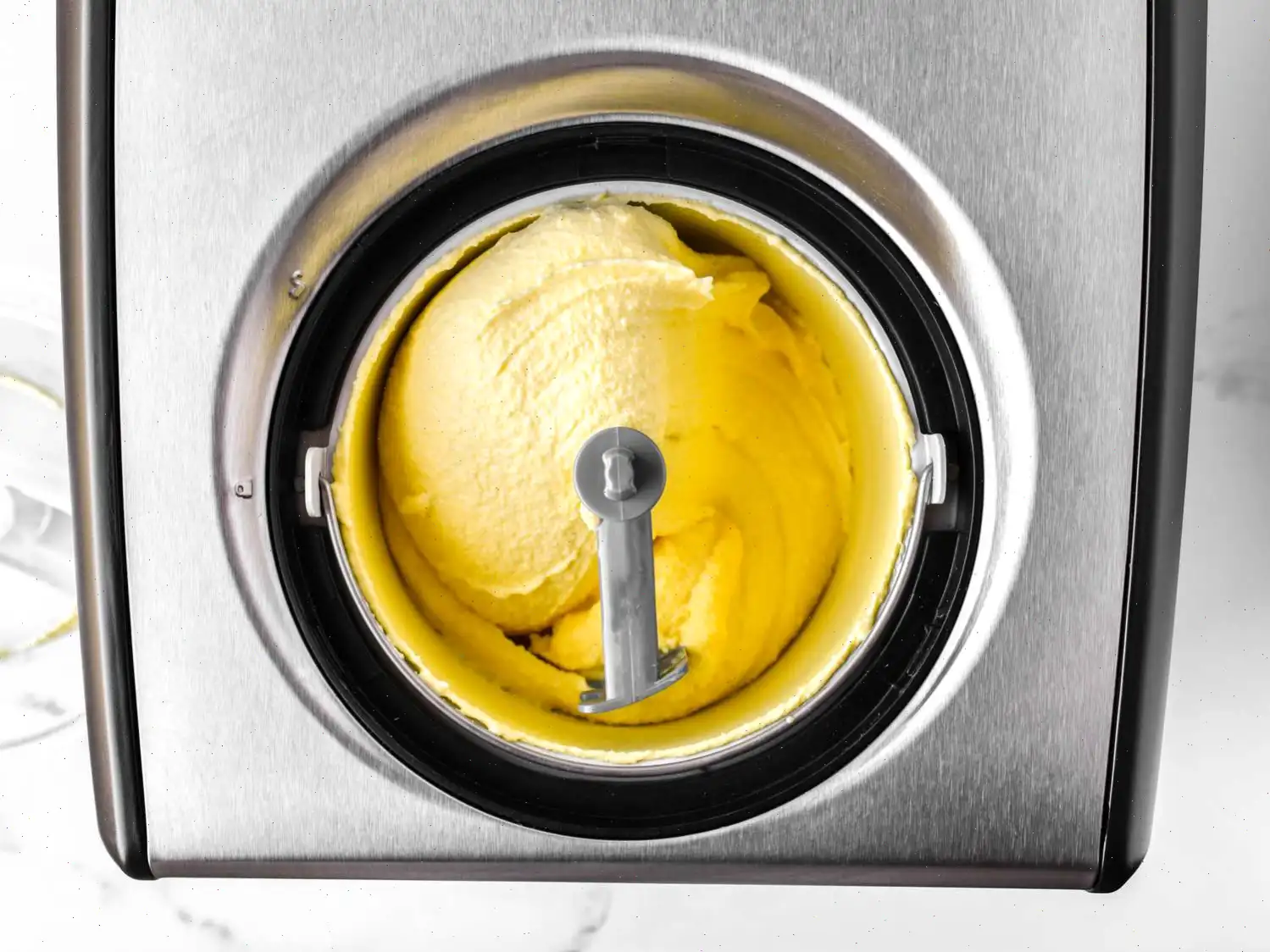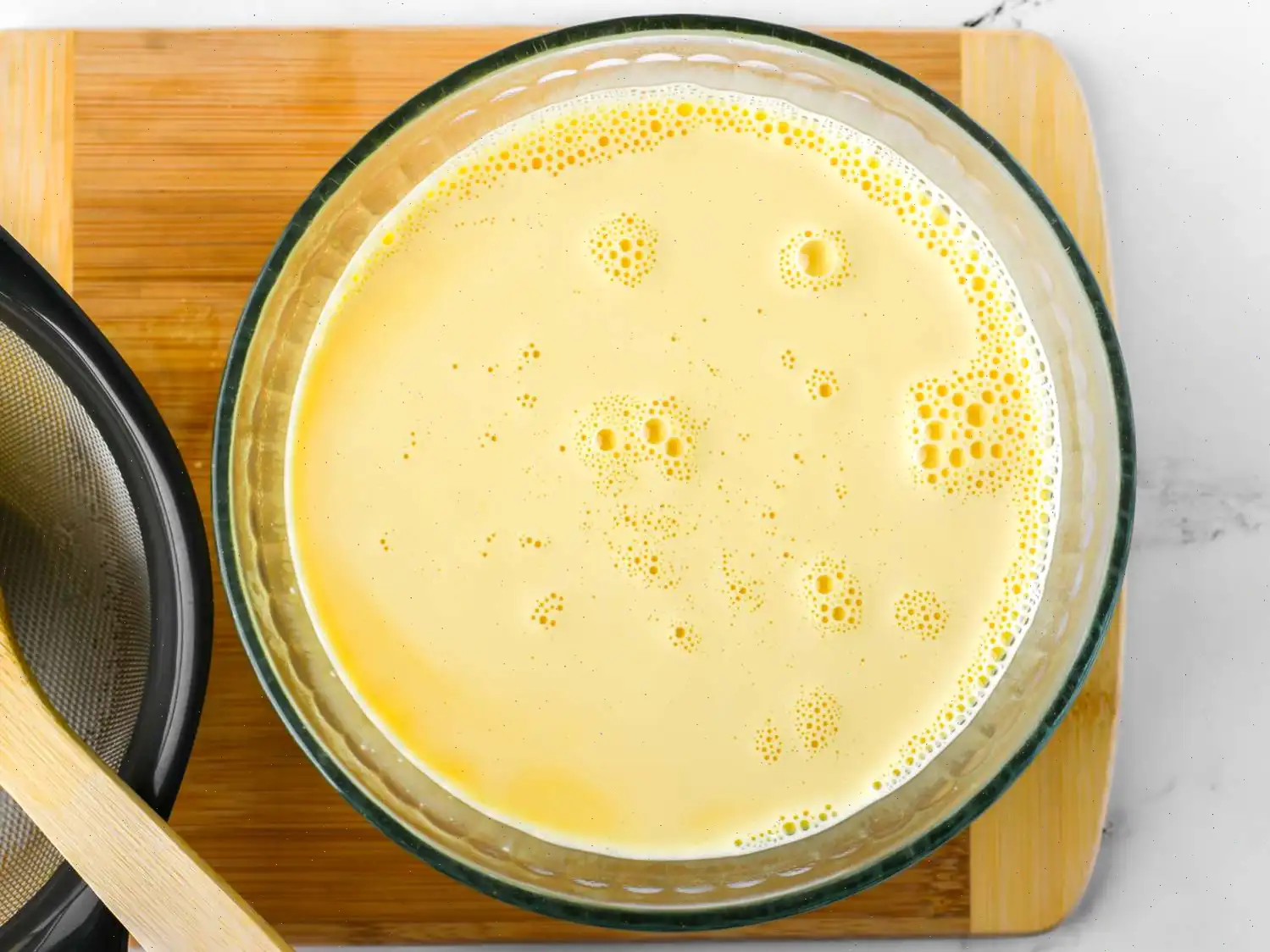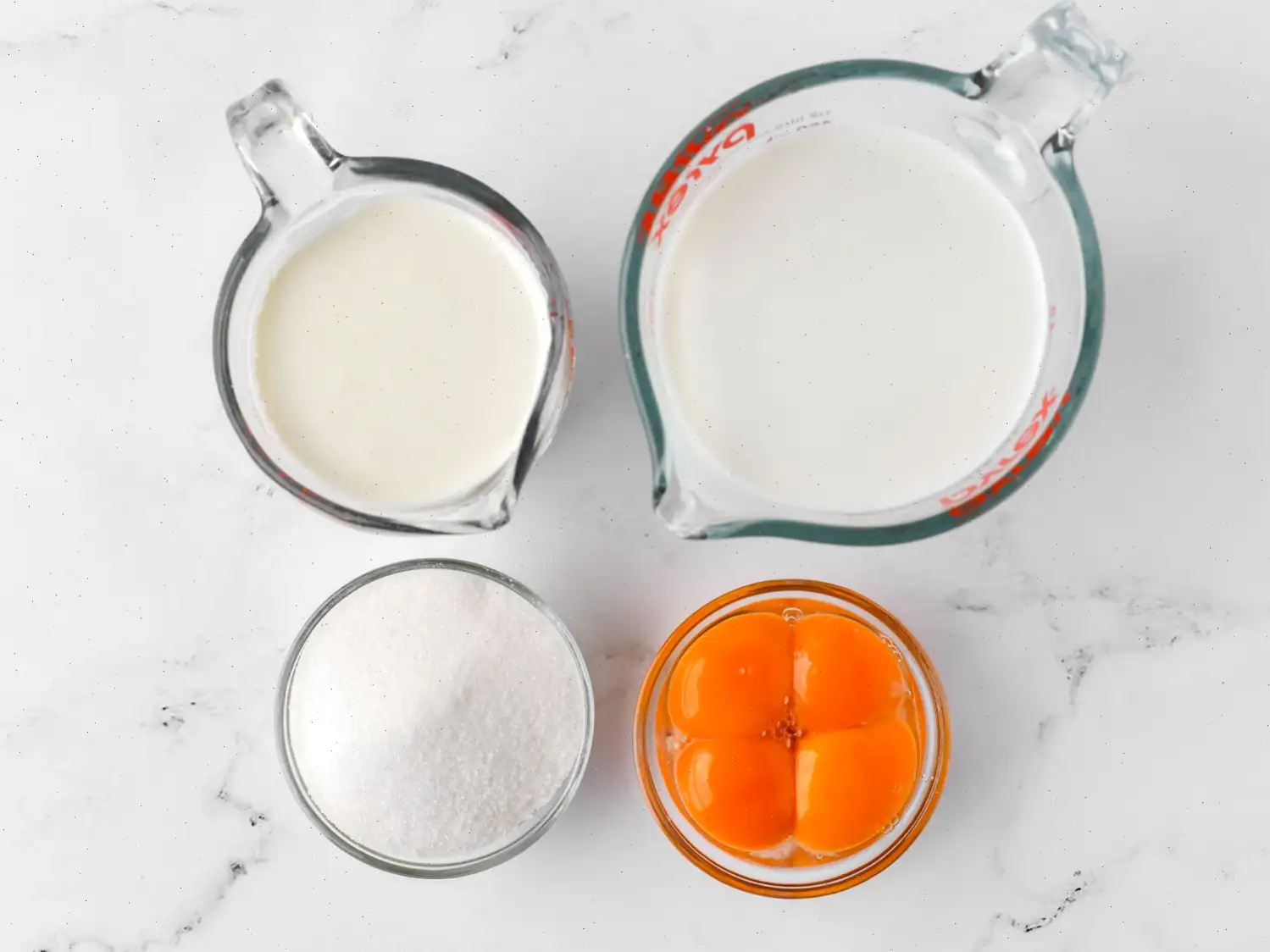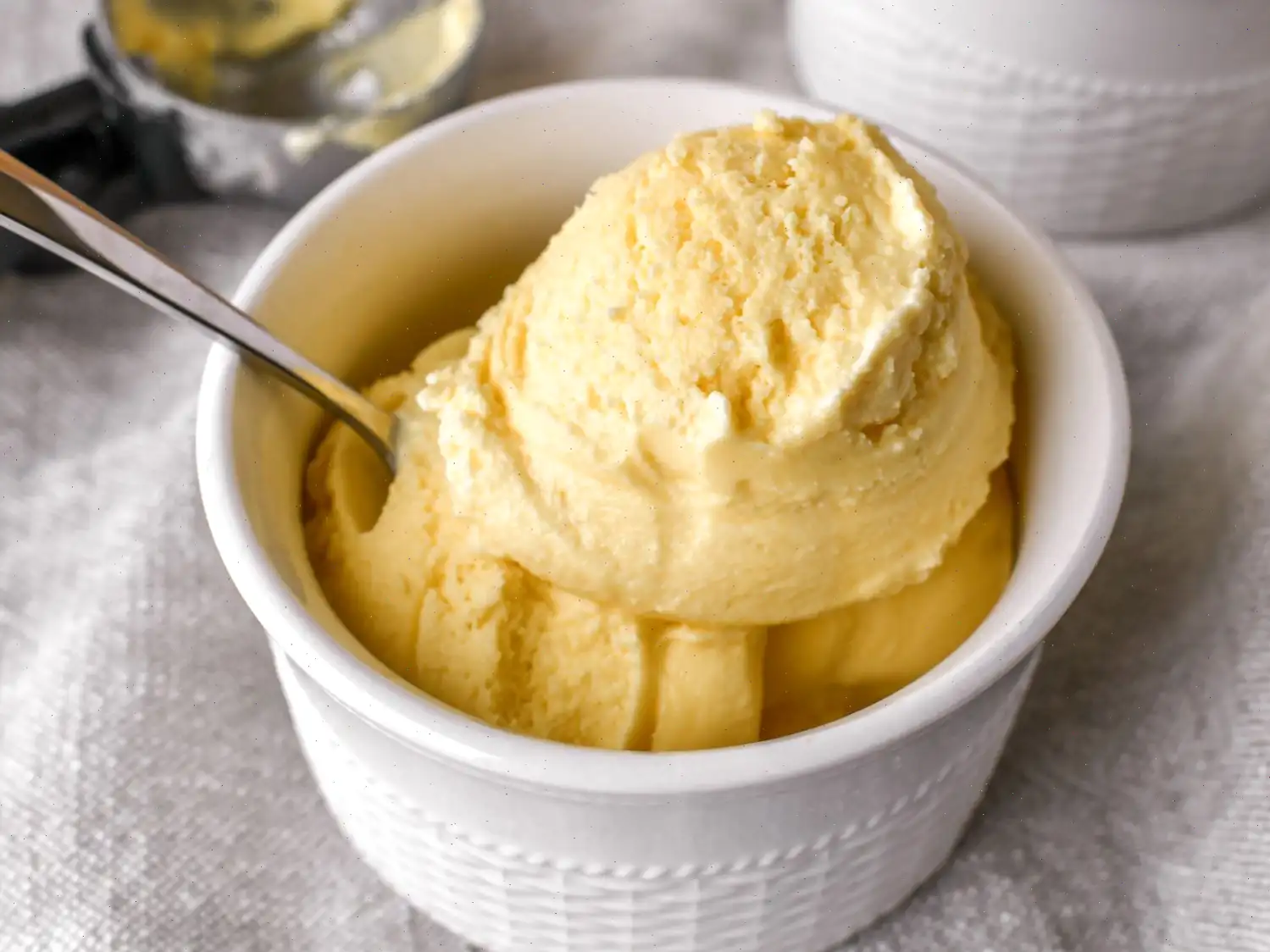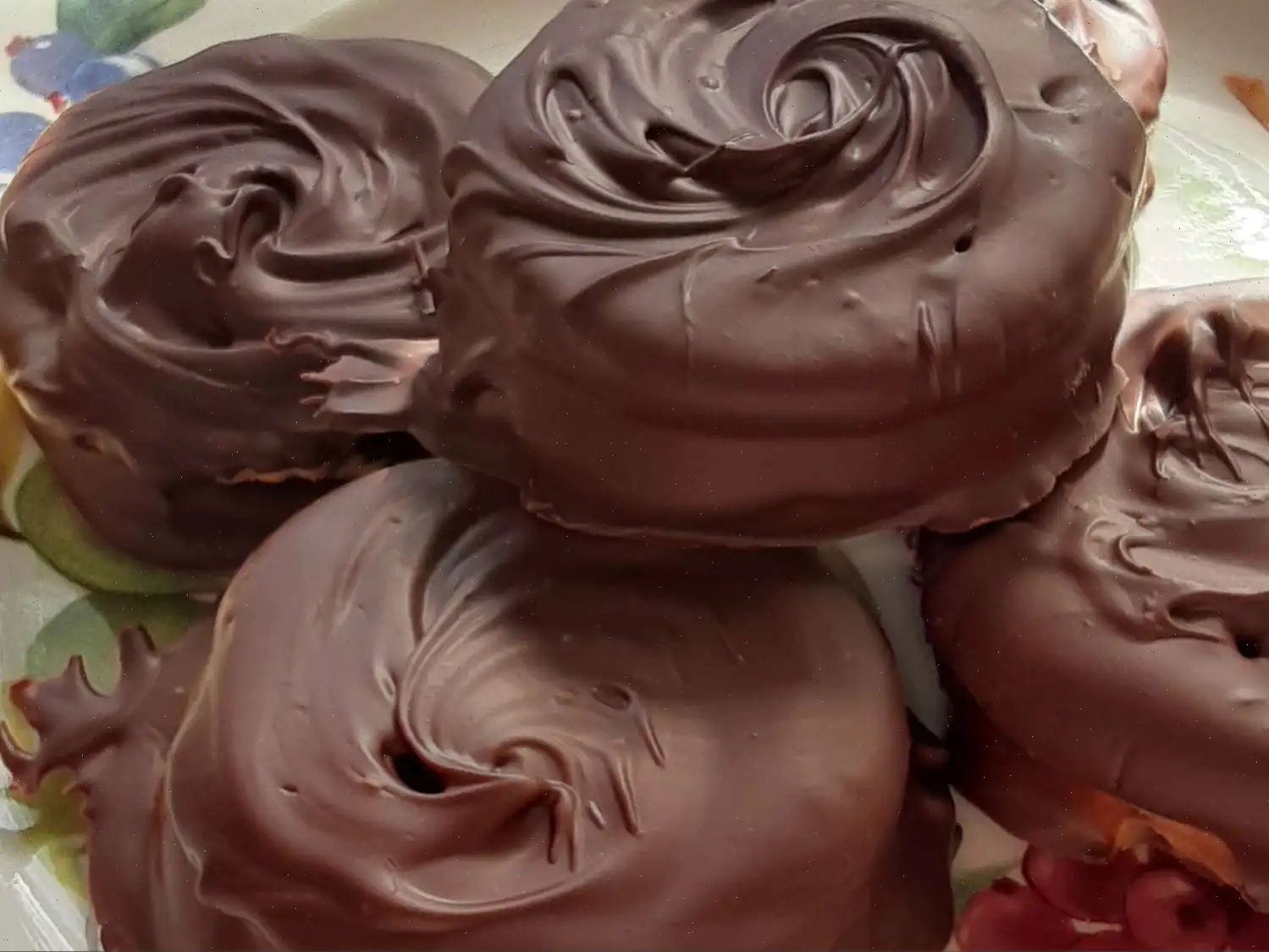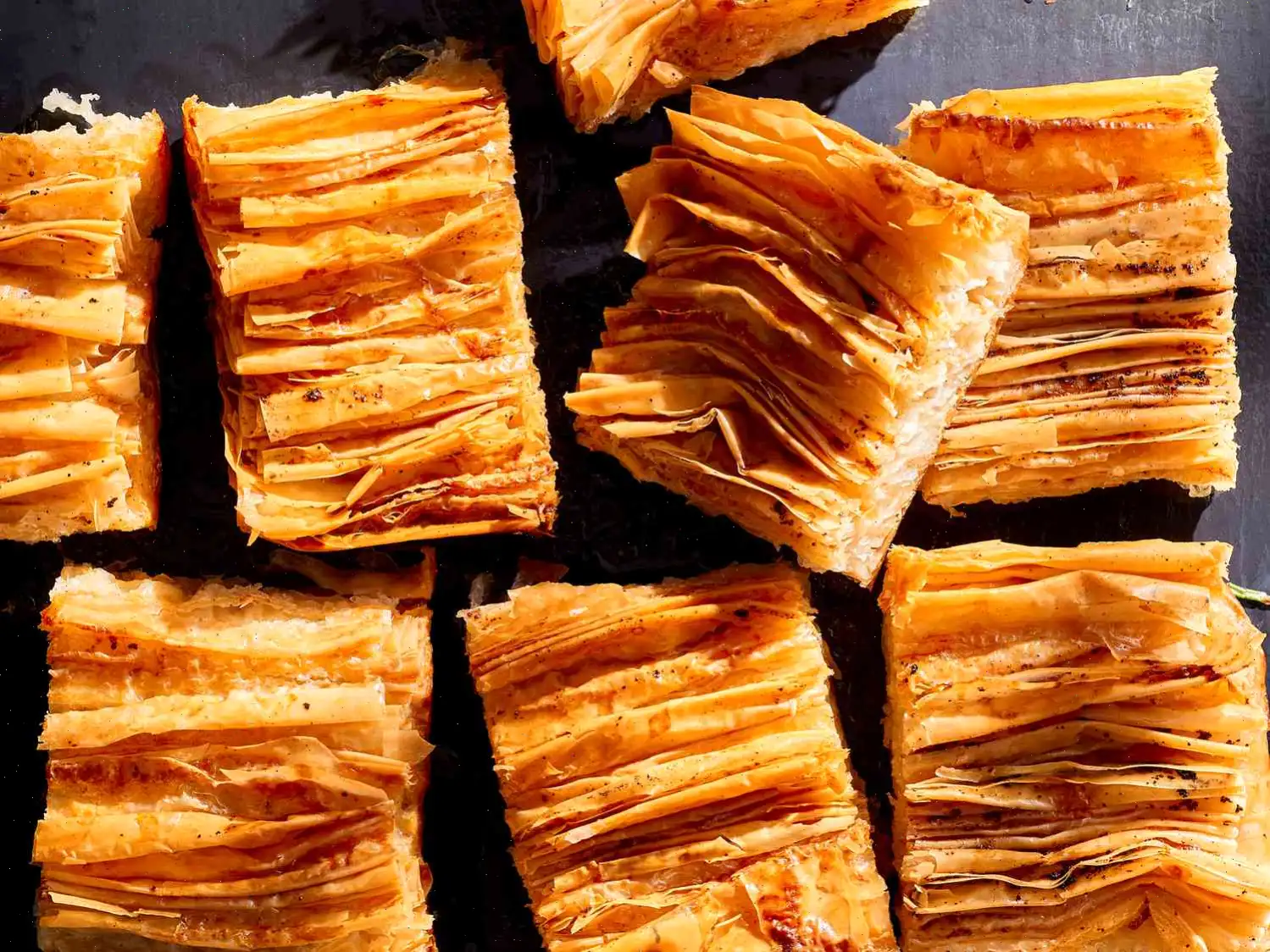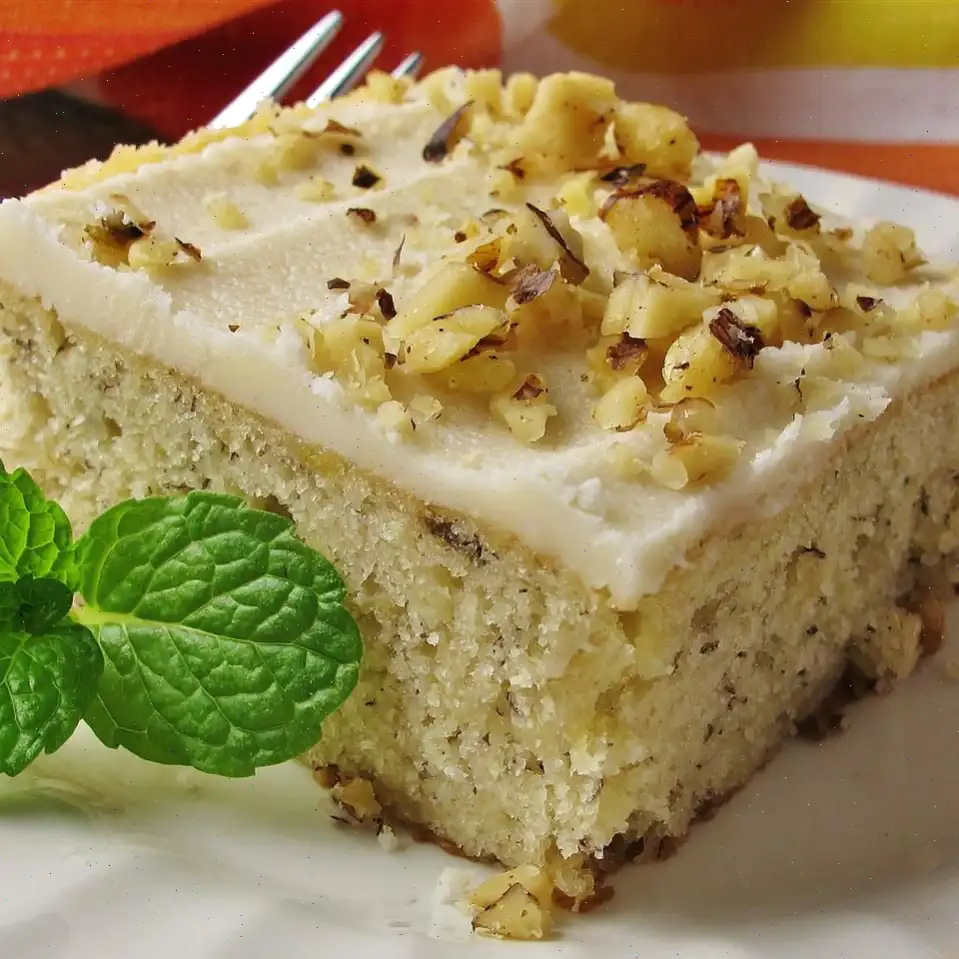
Gelato Recipe
Ice Cream Recipe
Ingredients
- 2 cups milk
- 1 cup heavy cream
- 4 egg yolks
- cup sugar
Directions
- Gather all the ingredients before starting.
- In a medium saucepan, combine the milk and cream. Warm the mixture over low heat until foam begins to form around the edges. Remove the pan from the heat once its ready.
- In a large bowl, whisk together the egg yolks and sugar until the mixture becomes frothy.
- Gradually add the warm milk and cream mixture into the egg yolk and sugar mixture, whisking constantly to avoid curdling.
- Return the combined mixture to the saucepan. Cook it over medium heat, stirring constantly with a wooden spoon. Keep cooking until the mixture thickens slightly and coats the back of the spoon. If you notice any small egg lumps, remove the saucepan from the heat immediately.
- Pour the mixture through a fine sieve or strainer into a clean bowl to remove any remaining lumps.
- Cover the bowl and let the mixture chill in the refrigerator for 2 hours, or preferably overnight.
- Once chilled, pour the mixture into an ice cream maker. Follow the manufacturers instructions to churn and freeze the mixture.
- Transfer the churned ice cream into a sealed and freeze it until firm, for at least 2 hours.
Nutrition Facts (per serving)
| Calories | 416 |
| Total Fat | 29g |
| Saturated Fat | 17g |
| Cholesterol | 296mg |
| Sodium | 81mg |
| Total Carbohydrate | 33g |
| Total Sugars | 31g |
| Protein | 8g |
| Vitamin C | 1mg |
| Calcium | 203mg |
| Iron | 1mg |
| Potassium | 246mg |
* Percent Daily Values are based on a 2,000 calorie diet. Your daily values may vary depending on your calorie needs.
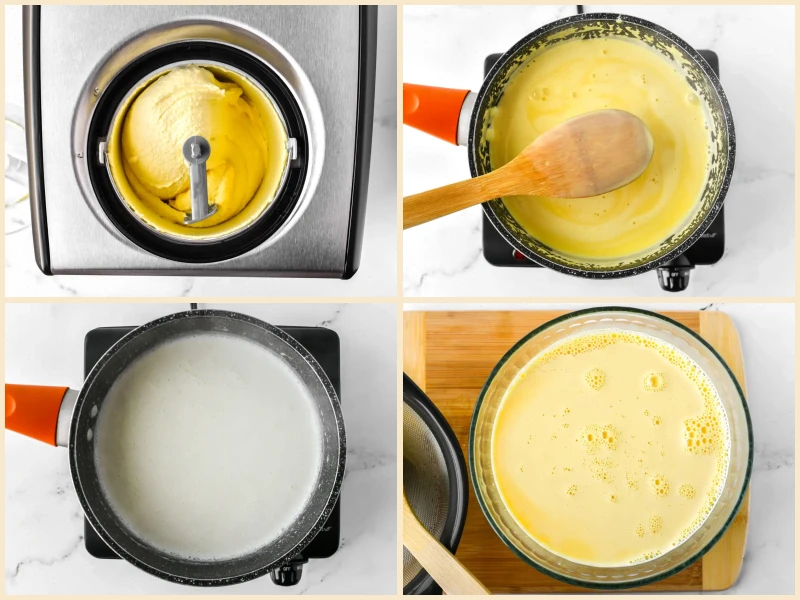
Gelato, the creamy, rich Italian ice cream, has gained international popularity for its dense texture and vibrant flavors. It differs from traditional ice cream in several key aspects, making it a beloved treat worldwide. The following article delves into the history, regional variations, and interesting facts about this frozen dessert.
Origin of Gelato
Gelato's origins trace back to Italy, with its roots believed to have been planted during the Renaissance. The modern version of gelato was crafted by the famous Sicilian pastry chef, Francesco Procopio dei Coltelli, in the 17th century. Procopio opened the first caf in Paris to serve his frozen creations, which eventually spread throughout Europe. Unlike traditional ice cream, which uses a higher air content, gelato is churned slowly, resulting in a denser and richer dessert.
Regional Variations of Gelato
While the basic recipe for gelato remains the same, it varies across Italy depending on local ingredients and traditions. In regions like Tuscany, gelato is often made using fresh milk and simple ingredients, allowing the natural flavors to shine. In contrast, the southern regions like Sicily infuse their gelato with citrus fruits such as blood oranges and lemons. Some regions also focus on the use of seasonal fruits, such as strawberries in spring or pistachios in winter.
How Gelato Differs from Other Frozen Desserts
One of the primary distinctions between gelato and other frozen desserts like ice cream or sorbetto is its texture. Gelato is denser and creamier, thanks to its lower air content (also known as "overrun"). Ice cream, by comparison, is whipped to incorporate more air, making it lighter and fluffier. Additionally, gelato is typically served at a slightly warmer temperature, enhancing its smoothness. While sorbetto is dairy-free and focuses on fruit flavors, gelato uses milk and cream to achieve its luxurious consistency.
Where Gelato is Typically Served
Gelato is a quintessential part of Italian culture and can be found throughout Italy in small artisanal shops known as "gelaterias." These local establishments pride themselves on using high-quality, fresh ingredients and preparing the gelato daily. Tourists flock to Italian cities such as Florence, Rome, and Venice, where gelato is often enjoyed as a refreshing treat while strolling through picturesque streets. Outside of Italy, gelato is also served in many cafes, restaurants, and even dedicated gelato shops worldwide.
Fun and Interesting Gelato Facts
- Gelato contains less fat than regular ice cream, as it uses more milk and less cream.
- Unlike ice cream, gelato is churned at a slower speed, which results in a denser texture and more intense flavor.
- The word "gelato" comes from the Italian verb "gelare," which means "to freeze." In Italy, gelato is often enjoyed as a daily treat, rather than just on special occasions.
- Many gelaterias in Italy boast of using locally sourced ingredients, often creating flavors that reflect the region's agricultural bounty, such as pistachios from Bronte or hazelnuts from Piedmont.
- In the past, gelato was served only in exclusive social settings, but now it is enjoyed by everyone, making it a symbol of Italian hospitality.
Conclusion
Gelato is more than just a frozen dessert; it represents the Italian passion for craftsmanship, quality ingredients, and the joy of simple pleasures. Whether enjoyed on a hot summer's day in Rome or as a special indulgence at a local gelateria, gelato will continue to delight and inspire ice cream lovers for generations to come.
FAQ about Gelato Recipe
Comments
Stephen Lewis
07/23/2023 07:12:33 PM
Rewritten review: I tried this recipe and it reminded me of the gelato I savored in Rome. Some might find it a bit eggy, as others have noted, but I didn't mind it much as the texture was heavenly. Using a 1-quart ice cream maker, the recipe produced about 3/4 quart, so next time I'll likely increase the measurements by 25%, except for the eggs for taste balance. I enhanced the flavor by adding 7 oz of Nutella, giving it a delightful hazelnut taste, and reduced the sugar to 1/4 cup due to the sweetness of Nutella. The end result was quite satisfying.
Nicole Roberts
03/13/2023 10:39:31 AM
I absolutely love this recipe and cannot praise it enough. Here are some helpful tips: Take your time with each step as it requires patience, be careful when tempering the eggs, continue stirring consistently once you return the mixture to the pot, and be sure not to skip straining the mixture. I wanted to make more gelato, so I increased the milk to 3 cups and the cream to 1 1/2 cups, while keeping the sugar amount the same. Instead of using 4 egg yolks, I used two whole eggs (which was simpler) and it fit perfectly in my 4 1/2 cup gelato maker. Using the freshest ingredients possible is key – I even had fresh milk on hand! After chilling the custard, you can add your chosen mix-ins. I decided to add 6 oz of Nutella and 2 tbsp of unsweetened cocoa, and it turned out absolutely AMAZING!
Dennis Thompson
08/17/2022 03:12:35 PM
I used this recipe as a base and then incorporated ground pistachio nuts, which turned out to be awesome. Tonight, I'm trying it with a hint of vanilla, and I have plans to make variations with lemon, coconut, and chocolate this weekend. If you detect a hint of "raw egg," it means that you haven't stirred and cooked the mixture long enough to properly coat the back of a spoon. When adding the hot milk/cream mixture to the egg/sugar, remember to continuously whisk the mixture to slightly cook the eggs. I usually have one person whisking while the other pours the mixture slowly. This step is crucial in cooking the eggs, so it's essential to keep whisking. When reintroducing the mixture to the saucepan for thickening, stir slowly until it fully coats the back of the spoon.
Susan Perez
08/11/2024 05:52:35 PM
Review rewritten: I am blown away by the incredible taste of this ice cream/gelato - the best I've ever had! And the fact that I whipped it up in my tiny Cuisinart ice cream machine is unbelievable! I stuck to the basic recipe but decided to kick it up a notch by adding a generous amount of chocolate to the cream mixture before heating it up - 1 cup of semisweet chocolate chips, a 3.5 oz. 70% dark chocolate bar, and 1/4 cup of Dutch Cocoa. I also included an extra 1/4 cup of sugar due to the cocoa content, although I'll probably cut it down to just one more tablespoon next time. I got a bit distracted and left the cream mixture unattended on the stove for too long, resulting in some bubbles forming, but luckily nothing burned or curdled. The same thing happened when I put the mixture back on the stove after tempering the eggs, but miraculously, it turned out perfectly. Surprisingly, it didn't expand much in my machine, which turned out to be a blessing as it stayed luxuriously rich and creamy. I can't say for sure if it was the addition of extra chocolate that kept it from ballooning up, but honestly, right now, my mind is completely consumed with thoughts of that container of chocolate gelato sitting in my freezer, waiting for me. Hats off to the recipe creator for such a fantastic treat!
Larry Nguyen
04/06/2025 09:56:25 PM
Excellent taste and fantastic consistency!
Anna Taylor
05/14/2024 10:51:24 AM
The eggs added a rich creaminess to the dish. Mixing rhubarb, strawberries, and a touch of vanilla was a fantastic idea. It was such a delightful experience!
Alexander Roberts
03/12/2024 07:44:00 AM
I haven't tried making this dish yet, but I've shared the recipe with my family online.
Rebecca Campbell
05/18/2024 05:14:42 AM
I followed the recipe instructions, but decided to add 4oz of dark chocolate based on a recommendation from another reviewer. I incorporated the chocolate into the warm custard mixture. I used a combination of 1 cup whole milk and 2 cups half and half, which provided the same milk-to-cream ratio. Although I strained the mixture through a fine sieve, I don't think it was entirely necessary. The base itself was sweet enough, but the addition of the chocolate transformed it into a creamy chocolate gelato rather than the dark chocolate gelato I was aiming for. I noticed that another reviewer added a cup of powdered cocoa to achieve a richer flavor, so I plan to try that with some instant espresso in my next batch. A single batch fit well in my gelato maker, and I'm glad I didn't attempt to double the recipe. It was ready to be transferred into a freezer container after about 25 minutes of processing. I found the texture to be not quite what I expected. It was too airy and creamy for my preference, lacking the "stretchy" consistency I've experienced with gelato in Italy and as described by other reviewers. I suspect that the texture issue may have been more due to the 4 egg yolks than the addition of chocolate. Despite this, I am determined to keep experimenting until I achieve the perfect gelato texture I desire.
Frank Rodriguez
08/12/2023 10:42:00 PM
I followed the base gelato recipe exactly and included vanilla and cinnamon for extra flavor. The result was delightful! The texture is very creamy and it's not overly sweet. I can't wait to try out different flavor variations.


